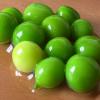-
Welcome to the eG Forums, a service of the eGullet Society for Culinary Arts & Letters. The Society is a 501(c)3 not-for-profit organization dedicated to the advancement of the culinary arts. These advertising-free forums are provided free of charge through donations from Society members. Anyone may read the forums, but to post you must create a free account.
Problem with lobster tail
-
Similar Content
-
- 165 replies
- 27,085 views
-
- 14 replies
- 10,267 views
-
- 1 reply
- 580 views
-
- 1 reply
- 1,136 views
-
- 20 replies
- 11,066 views
-
-
Recently Browsing 0 members
- No registered users viewing this page.





Recommended Posts